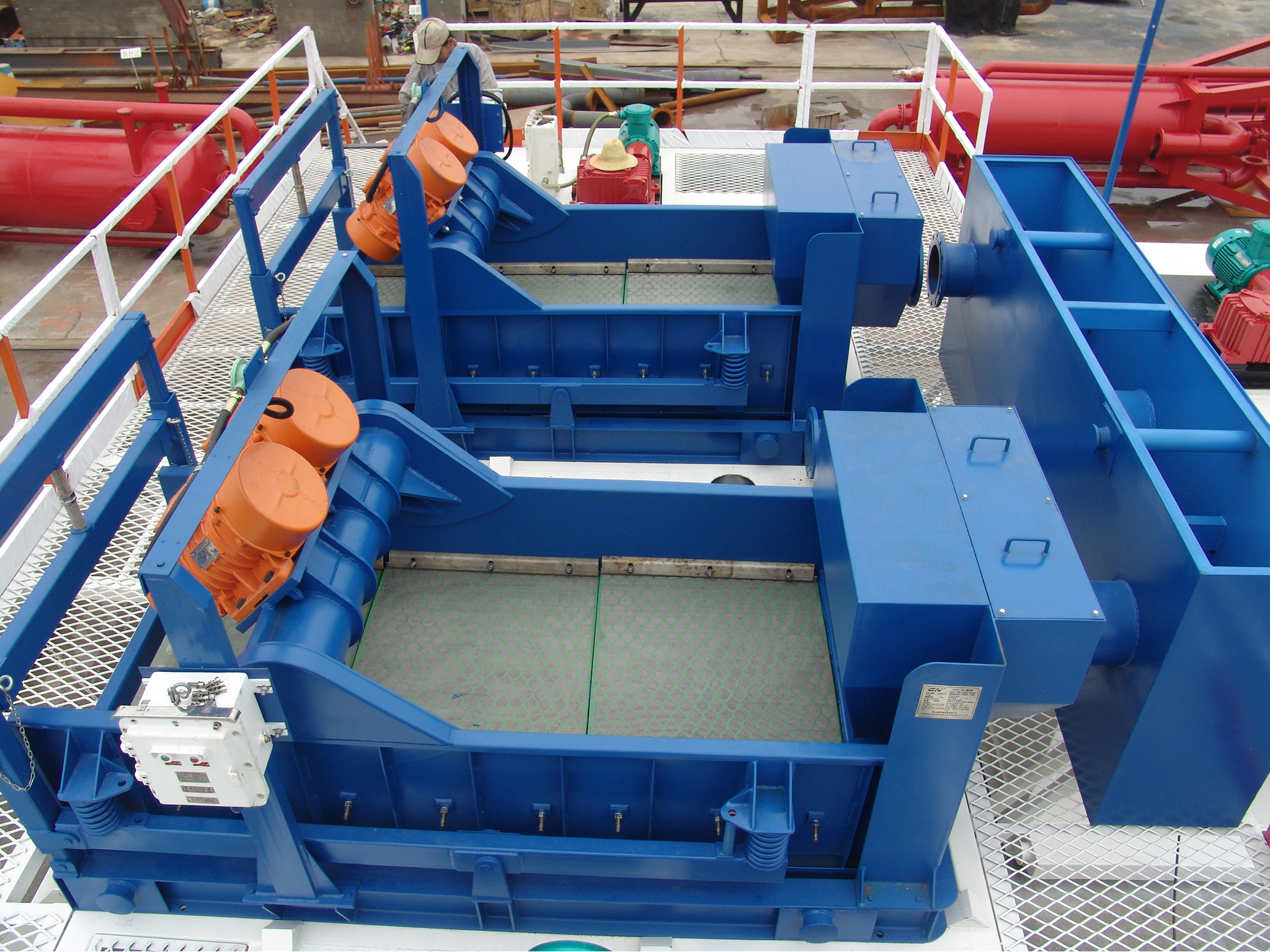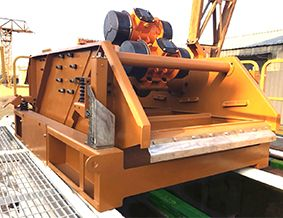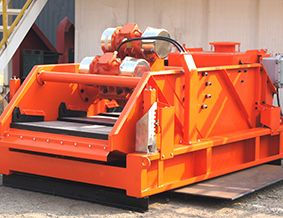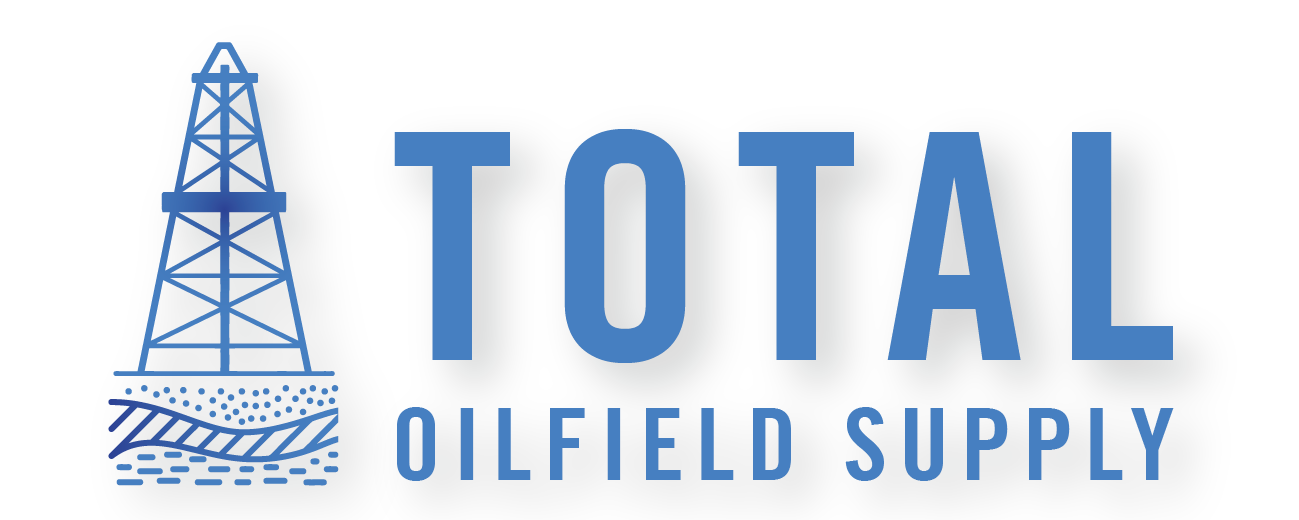A shale shaker is a key component on an oil rig, specialized in filtering out unwanted solids from drilling fluids. This process is crucial for the proper functioning and efficiency of drilling operations. In this article, we’ll explore what is a shale shaker oil rig, how shale shakers work, and their importance in the oil extraction process, giving you a clear picture of their role on a rig.
Key Takeaways
Proper screen selection, regular maintenance, and integration with other solids control systems are essential for optimizing shale shaker performance, which ultimately enhances drilling fluid lifecycle, reduces operational
costs and minimizes environmental impact.
Shale shakers are a critical component in drilling operations, responsible for the initial phase of solids control by separating cuttings from drilling fluid, which maintains drill bit efficiency, reduces equipment wear, and ensures smooth operational progress.
Shale shakers employ various types of motion—unbalanced elliptical, circular, linear, and balanced elliptical—to optimize the separation of solids from liquids, with balance and precision in design impacting overall performance, efficiency, and the capacity to handle different drilling scenarios.
Exploring the Role of Shale Shakers in Oil Drilling
Nestled within the constellation of heavy equipment on a drilling rig, the shale shaker stands as the primary solids separation tool, ensuring drilling fluid purity. As the first phase in a sophisticated solids control system, shale shakers are tasked with the vital job of removing large solids, known as cuttings, from the drilling fluid. Picture the shaker in action: a vibratory force propels the drilling fluid across a fine-meshed screen, catching the rough cuttings while allowing the cleaner fluid to pass through and be recirculated back into the depths.
This process is not just about filtration; it’s a delicate balancing act. The shale shaker’s role extends to:
Cooling and lubricating the drill bit
Moving the drilled cuttings away from the borehole
Ensuring the drilling operation proceeds smoothly and effectively
The state of the treated drilling fluid is a testament to the shale shaker’s performance, with its cleanliness having a direct influence on the longevity and efficiency of downstream equipment within the solids control system.
The Mechanics Behind Shale Shaker Technology

Shale shakers consist of a marriage between robust industrial design and precision-engineered mechanics. Enduring extreme environments and relentless wear, these machines are equipped with industrial vibrators that deliver the necessary motion to separate solids from liquids.
Over the decades, technology has refined the motion of shale shakers, from the initial elliptical systems to the precise linear and balanced elliptical designs of today, each with its unique ability to improve solids removal and performance.
Vibrating Screen Dynamics
The heart of the shale shaker is its vibrating screen, the dynamic surface that dictates the efficiency of the separation process. There are four primary types of motions at play:
Unbalanced elliptical: This motion may hinder solid discharge due to its mixed motion pattern.
Circular: Circular motion shakers improve solids conveyance, enabling the use of finer screens for better filtration.
Linear: Linear motion shakers provide efficient solids conveyance and are commonly used in the industry.
Balanced elliptical: Balanced elliptical motion combines the benefits of both unbalanced elliptical and linear motions.
Each type of motion impacts the conveyance of solids and the effectiveness of separation in distinct ways.
Linear motion shakers stand out with their straight-line motion, offering enhanced cuttings conveyance and the ability to utilize finer screens without compromising performance. The balanced elliptical motion, on the other hand, combines the strengths of elliptical and linear motions, using counterrotating vibrators to effectively move solids towards the discharge end. These varying screen dynamics play a crucial role in determining the shaker’s efficacy and have evolved to meet the demands of increasingly complex drilling operations.
Screen Panel Features
At the forefront of the separation process lies the shaker screen, whose design is as critical as the mechanical vibrations that drive the shale shaker. Screen panels are engineered to:
Maximize conductance
Provide a large surface area for material separation
Allow finer material to pass through while directing larger particles off the end
In linear motion shakers, this design is optimized to leverage the G-force, ultimately enhancing both efficiency and cost-effectiveness.
Balanced elliptical motion shakers demand screen panels that can manage increased flow capacity, combating common issues like screen sticking and the ‘horseshoe effect’ that can hinder the separation process. The lifespan and performance of these panels are further optimized by feeders, which ensure an even distribution of drilling fluid across the screen’s surface area, maintaining the shaker’s high-performance standards.
Discharge Systems
Once the drilling fluid has been processed by the vibrating screen, the separated solids make their exit through a discharge system designed for stability and efficiency. The discharge port funnels the solids directly into a separate holding tank, where they can either be processed further or prepared for disposal. This system ensures a steady flow of solids, preventing interruptions in the continuous processing of drilling fluid and maintaining the rhythm of drilling operations.
The design of the discharge system is a critical component in the solids control process, built to facilitate the easy transport of solids to the next stages of treatment or disposal without creating bottlenecks in the workflow. With such specialized machines at play, the drilling fluid can be handled with precision, ensuring that every drop is accounted for and utilized to its maximum potential.
Shale

Shaker Design Variations
Shale shakers come in a variety of designs, each tailored to meet the specific needs of different drilling environments. The linear motion shale shaker, with its robust vibratory motors, creates a straight-line motion that is adept at processing high-solid fluids and large volumes, which is particularly beneficial in challenging drilling conditions. These shakers are renowned for their ability to handle operations with high flow rates, thanks to their capacity for managing large displacements of drilling fluid.
On the other hand, balanced elliptical shale shakers offer the following benefits:
Increased capacity
Improved filtration
Reduced screen blockage and horseshoe effect
Reduced mud loss
Elevated filtration efficiency
Ability to process a higher volume of material
Adjustable features such as angle devices for adaptability to different drilling scenarios
Peak performance in solids control
This design variation effectively combines the advantages of linear and elliptical shakers, providing a comprehensive solution for solids control.
Screen Selection and Maintenance
Choosing the right shaker screen and maintaining it properly are critical steps in ensuring the shale shaker performs at its best. The selection of the screen has the most significant impact on the shaker’s overall performance, with advancements like Pyramid Screen technology enhancing the usable screening area without increasing the size of the machine.
Regular maintenance, coupled with the ability to accommodate various screen panel types, influences the efficiency of fluid cleaning on the screen surface and, by extension, the longevity of the equipment.
Importance of Screen Mesh Size
The mesh size of a shaker screen is a critical factor in maintaining the quality of drilling fluid and preventing issues such as screen blinding. With the correct mesh size, shakers can effectively separate specific particle sizes, which is vital for the longevity of the screen and the shaker’s functionality. Recent advancements have allowed the use of finer screens, thereby enhancing the solid control process by enabling better separation of smaller particles from the drilling fluid.
However, the choice of mesh size is a delicate balance. A mesh that is too fine can lead to increased screen wear and a higher likelihood of screen blinding, which can adversely affect the flow rate of drilling fluid. It is imperative to match the screen mesh size with the properties of the drilling fluid to maintain its quality and ensure that the flow rate and solids removal efficiency are not compromised.
The correct mesh size is determined by the size of the particles to be removed from the drilling fluid, optimizing separation and minimizing the loss of drilling fluid.
Maintaining and Optimizing Screen Performance
To maximize the life and effectiveness of shaker screens, regular maintenance and careful handling are indispensable. Daily routines should include cleaning to remove material buildup, inspecting for proper screen tension, and checking the condition of mounting systems and wear signs. Modular screen technology and fast-loading tensioning systems contribute to the longevity of the screens by enabling quick and easy repairs and replacements when needed.
Yet, screens can fail prematurely due to various reasons, including mishandling, improper installation, and tensioning issues. It is essential to train personnel appropriately and store screens correctly to prevent such failures. By adhering to these maintenance practices, the performance of shaker screens can be optimized, ensuring they continue to play their crucial role in the drilling process efficiently.
Integration with Solids Control System
The role of shale shakers extends beyond individual performance, as they are integrated components of the broader solids control system. By removing larger solid particles at the outset, shale shakers help prevent blockages and reduce wear in drilling fluid pumps and other downstream equipment. These primary solids separation tools are designed to work in tandem with other solid control equipment, such as:
Mud cleaners, which further clean the drilling fluid of cuttings
Desanders, which remove sand-sized particles from the drilling fluid
Desilters, which remove silt-sized particles from the drilling fluid
Together, these tools ensure that the process drilling fluid flows directly, remaining clean and free of solids, improving drilling efficiency and reducing equipment maintenance.
The integration of shale shakers within the solid control system is seamless, with features like multiple feed boxes for improved fluid distribution and bypass valves that route fluid directly into the collection pan when necessary. Following treatment by the shale shakers, the drilling fluid flows into mud tanks and passes through further solid control equipment like desanders and desilters, which minimize the entry of finer solids into subsequent stages.
Enhancing Drilling Fluid Life Cycle
Shale shakers play a crucial role in the life cycle of drilling fluids, pivotal in the cleaning and reuse processes that are essential within the oil and gas industries. The quality of the screen panels significantly influences the effectiveness of solids control, directly impacting the costs associated with drilling fluid maintenance. By adequately separating drilled cuttings from drilling fluids, shale shakers reduce the solids content in the mud, thereby extending its usability and reducing the need for fluid replacement.
Effective solids control equates to full system efficiencies, translating into significant cost savings in drilling fluid maintenance and disposal. As such, the operation of shale shakers is not only a technical necessity but also a cost-saving measure that can have a substantial impact on the bottom line of drilling operations.
Impact on Overall Drilling Efficiency
The efficiency of shale shakers has a ripple effect on the entire drilling operation. By reducing the volume of drilling fluid that needs replacement or disposal, these machines:
Lower the operational costs
Contribute to regulatory compliance
Minimize the environmental footprint of drilling activities through the decreased volume of waste generated, aiding in meeting environmental regulations.
The treated drilling fluid’s cleanliness, ensured by the shale shakers, has a direct correlation to the performance of subsequent equipment and the overall drilling fluid lifecycle. Therefore, the integration of efficient solids control systems—including shale shakers—results in reduced drilling times for top hole sections, cost efficiencies, and environmental benefits, underscoring the shaker’s impact on overall drilling efficiency.
Troubleshooting Common Shale Shaker Issues
Even with meticulous design and maintenance, shale shakers can encounter operational challenges that require troubleshooting. Factors contributing to premature screen failure include mishandling, improper installation, excessive mud weight, and tensioning issues, all of which can hamper the shaker’s functionality. Additionally, leaks or improper flow of drilling fluid to the shale shaker could arise from a variety of issues, such as closed valves, blockages, screen failures, or bypass valve problems.
Motor malfunctions pose another set of challenges, with potential causes ranging from incompatible power supply to overheating, all of which can lead to shaker downtime. Ensuring the drive belt is adjusted according to the manufacturer’s recommendations is crucial, as incorrect adjustments can cause motor issues that impact the shaker’s operation.
By systematically addressing these common problems, shaker performance can be restored, ensuring the continuity and efficiency of drilling operations.
Summary
As we reach the end of our exploration, it’s clear that shale shakers are more than just mechanical sifters; they are the guardians of drilling fluid integrity, the enhancers of drilling efficiency, and the protectors of the environment. Through the technological marvel of shale shaker design and operation, drilling operations can achieve greater precision, cost-effectiveness, and sustainability. As the industry continues to evolve, the shale shaker will undoubtedly remain a cornerstone of innovation and efficiency in the world of drilling.
Frequently Asked Questions
What is shale shaker efficiency?
Shale shaker efficiency refers to the ability of the machine to remove coarse particles first, gradually separating finer particles through vibrating mesh screens. The large particles are sieved and discarded to the mud pit.
Is shale shaker used for separating fluid from drilling cuttings?
Yes, shale shaker is used for separating fluid from drilling cuttings by removing large solids from the drilling fluid before it is re-circulated back into the wellbore.
What are the main components of shale shaker?
The main components of a shale shaker include a vibrating motor, screen panels, feeder trough, and basket or deck. The AIPU Hunter-MG series of shale shakers uses Ital-Vibras/Martin/Oli brand vibrating motors.
How have shale shaker designs evolved over time?
Shale shaker designs have evolved over time, progressing from elliptical motion systems to circular, linear, and balanced elliptical motion shakers, with each design offering enhanced solids removal and better performance in various drilling conditions.
How does shale shaker maintenance impact drilling operations?
Regular maintenance and inspections of shale shakers are crucial for maintaining screen effectiveness, ensuring efficient separation of solids from drilling fluid and contributing to overall efficiency and cost-effectiveness of drilling operations.
